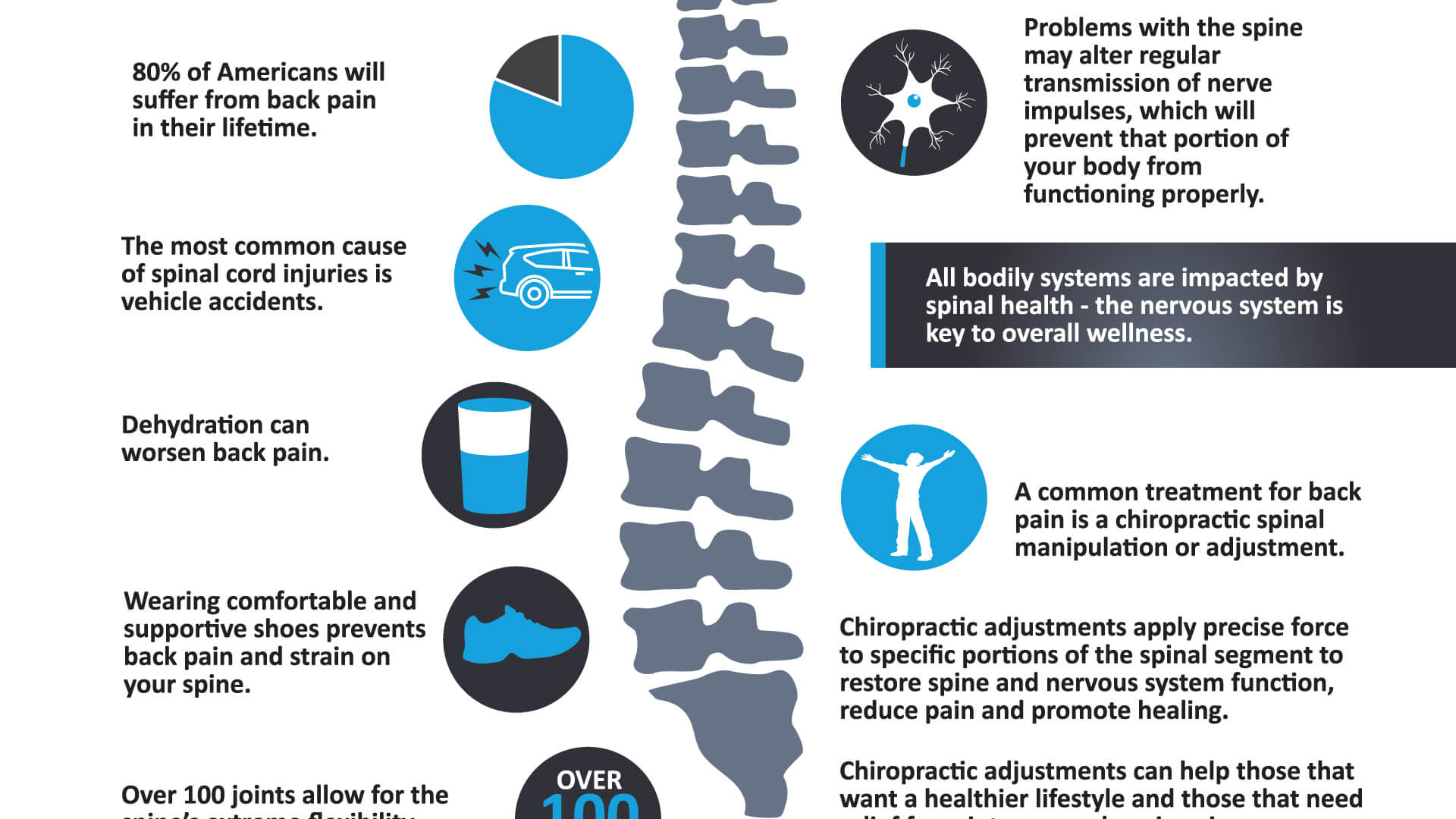The Top Daily Habits That Contribute To Pain In The Back And How To Prevent Them
The Top Daily Habits That Contribute To Pain In The Back And How To Prevent Them
Blog Article
Web Content Composed By-Briggs Dempsey
Maintaining proper position and preventing usual challenges in daily tasks can substantially impact your back health and wellness. From exactly how you sit at your workdesk to how you lift hefty things, tiny changes can make a big difference. Think of a day without the nagging neck and back pain that hinders your every relocation; the service may be easier than you think. By making a few tweaks to your day-to-day habits, you could be on your method to a pain-free existence.
Poor Position and Sedentary Way Of Life
Poor stance and a sedentary way of living are two major factors to neck and back pain. When you slouch or inkling over while resting or standing, you placed unnecessary strain on your back muscular tissues and back. This can bring about muscular tissue discrepancies, stress, and eventually, chronic neck and back pain. Additionally, sitting for long periods without breaks or physical activity can damage your back muscular tissues and lead to tightness and discomfort.
To combat inadequate posture, make an aware effort to sit and stand up directly with your shoulders back and lined up with your ears. Bear in mind to maintain your feet flat on the ground and stay clear of crossing your legs for extensive periods.
Integrating normal extending and strengthening workouts right into your everyday regimen can also help improve your posture and alleviate pain in the back connected with an inactive way of life.
Incorrect Training Techniques
Inappropriate lifting strategies can substantially contribute to neck and back pain and injuries. When what can cause lower back pain raise heavy objects, keep in mind to flex your knees and use your legs to raise, as opposed to depending on your back muscular tissues. Prevent twisting your body while training and keep the things near to your body to decrease strain on your back. It's vital to maintain a straight back and stay clear of rounding your shoulders while raising to prevent unnecessary pressure on your spinal column.
Always analyze the weight of the things before raising it. If it's too hefty, request for help or usage devices like a dolly or cart to carry it securely.
Bear in mind to take breaks during lifting jobs to provide your back muscle mass a possibility to rest and prevent overexertion. By applying correct training methods, you can stop pain in the back and decrease the danger of injuries, guaranteeing your back remains healthy and strong for the long term.
Lack of Regular Exercise and Extending
A less active way of life lacking routine exercise and stretching can dramatically contribute to pain in the back and discomfort. When you don't take part in physical activity, your muscular tissues come to be weak and inflexible, leading to poor pose and increased pressure on your back. Routine workout assists reinforce the muscles that support your spine, improving stability and decreasing the threat of pain in the back. Including extending Recommended Browsing into your regimen can additionally improve adaptability, protecting against stiffness and pain in your back muscular tissues.
To avoid neck and back pain triggered by an absence of workout and stretching, aim for at least half an hour of modest physical activity most days of the week. Consist of exercises that target your core muscles, as a solid core can assist ease stress on your back.
Furthermore, take breaks to stretch and relocate throughout the day, particularly if you have a desk work. Basic stretches like touching your toes or doing shoulder rolls can help alleviate stress and prevent neck and back pain. Prioritizing routine exercise and extending can go a long way in maintaining a healthy back and lowering pain.
Verdict
So, bear in mind to sit up right, lift with your legs, and remain active to prevent pain in the back. By making easy adjustments to your day-to-day practices, you can prevent the pain and limitations that come with neck and back pain. Care for your spine and muscle mass by practicing great pose, proper training methods, and routine exercise. Your back will certainly thanks for it!
